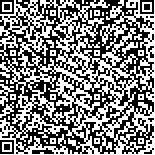| 摘要: |
| [摘要] 目的 评价可调节式自体心包软环成形术治疗功能性三尖瓣反流(functional tricuspid regurgitation,FTR)的早中期疗效。方法 回顾性分析2010-12~2012-12收治的72例FTR患者的临床资料,患者均在行左心系统瓣膜手术时同期行三尖瓣成形术。其中自体心包软环组(38例)采用新鲜的自体心包条制成可调节式心包软环,行三尖瓣成形术;De Vega组(34例)采用De Vega法三尖瓣成形术。术后随访2年比较两组患者术前、术后1个月及术后2年的三尖瓣反流度(STR/STA)、舒张期三尖瓣环直径(diastolic tricuspid annulus diameter,DTAD)、右心房内径(right atrium diameter,RAD)和右心室内径(right ventricular inner diameter,RVD)等右心功能参数。结果 两组术后1个月DTAD、STR/STA、RAD及RVD较术前明显缩小(P<0.05)。术后2年,De Vega组DTAD较术后1个月明显增大,并明显大于自体心包软环组DTAD(P<0.05),但自体心包软环组DTAD与术后1个月比较未明显增大(P>0.05)。自体心包软环组术后2年的STR/STA与术后1个月比较差异无统计学意义(P>0.05),De Vega组术后2年的STR/STA较术后1个月虽无明显差异(P>0.05),但与自体心包软环组术后2年比较,反流度显著增加(P<0.05)。结论 应用可调节式新鲜自体心包软环三尖瓣成形术治疗FTR技术简单,安全有效,早中期疗效明显优于De Vega法三尖瓣成形术。 |
| 关键词: 功能性三尖瓣反流 三尖瓣关闭不全 心包 可调节式自体心包软环 三尖瓣成形术 |
| DOI:10.3969/j.issn.1674-3806.2019.03.06 |
| 分类号:R 542.5 |
| 基金项目:国家自然科学基金项目(编号:81360020);广西自然科学基金项目(编号:2016GXNXFAA380079);广西卫健委科研课题(编号:Z2015366) |
|
| Evaluation of short-term and middle-term effects of adjustable autologous pericardial soft ring on treatment of functional tricuspid regurgitation |
|
ZHONG Yong-long, LONG Xiao-mao, HE Bang-fu, et al.
|
|
Department of Thoracic Cardiovascular Surgery, the People′s Hospital of Guangxi Zhuang Autonomous Region, Nanning 530021, China
|
| Abstract: |
| [Abstract] Objective To investigate the short-term and middle-term effects of adjustable autologous pericardial soft ring on treatment of functional tricuspid regurgitation(FTR). Methods Seventy-two patients with FTR underwent tricuspid annuloplasty plus left heart valve surgery from December 2010 to December 2012, and their clinical data were retrospectively analyzed. Fresh autologous pericardial pericardium was used to make an adjustable pericardial soft ring for tricuspid annuloplasty in the autologous pericardial soft ring group(n=38), and De Vega suture tricuspid valvuloplasty was performed on the De Vega group(n=34). All the patients were followed up for 2 years after surgery. The tricuspid regurgitation(STR/STA), diastolic tricuspid annulus diameter(DTAD), right atrium diameter(RAD) and right ventricular inner diameter(RVD) were compared between the two groups before and 1 month, 2 years after surgery. Results At 1 month after surgery, the parameters of DTAD, STR/STA, RAD and RVD were significantly less than those before surgery in the two groups(P<0.05). After a 2-year follow-up, DTAD in the De Vega group became significantly widened compared with that 1 month after surgery(P<0.05) while DTAD in the autologous pericardial soft ring group had no significant change(P>0.05). After follow-up for 2 years, there were no significant differences in the parameters of STR/STA in the two groups compared with those 1 month after surgery(P>0.05). However, the degree of reflux in the De Vega group increased significantly compared with that in the autologous pericardial soft ring group 2 years after surgery(P<0.05). Conclusion The use of adjustable autologous pericardial soft ring is simple, safe and effective for the treatment of FTR, and its short-term and middle-term effects are significantly better than those of De Vega tricuspid annuloplasty. |
| Key words: Functional tricuspid regurgitation Tricuspid insufficiency Pericardium Adjustable autologous pericardial soft ring Tricuspid annuloplasty |

